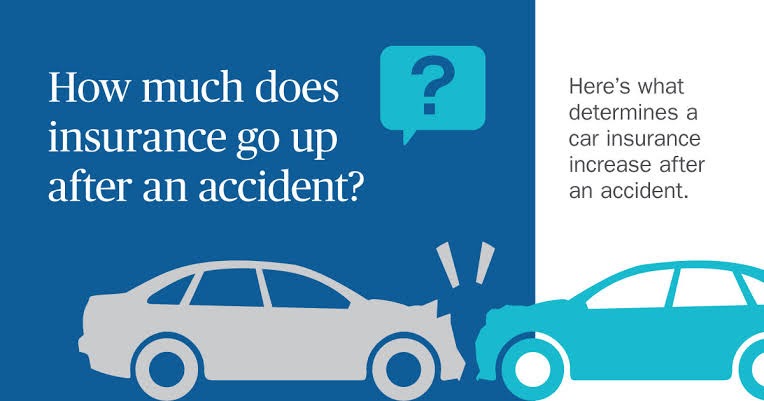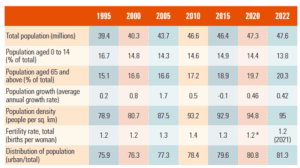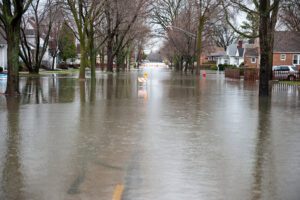How Much Does Car Insurance Increase After An Accident?

Are you planning to make a claim with your auto insurance provider? Here’s what you need to know first before you decide to file, so your premiums could increase dramatically.
This excitation comes courtesy of a joint study between InsuranceQuotes and Quadrant Information Services . Compared to the data, drivers who made a single car insurance claim saw their premiums increase by an average of 44.1%. The study examined the impact of claims worth $ 2,000 or more and compared premium increases in all 50 states and Washington, D.C.
Remember, the reported premium increases were not for individuals with a history of unsafe driving. The study concluded that even after a single automatic claim, premium increases could be significant. Worse still, premium increases generated off the back of claims have increased over the past few years.
Compare Affordable Car Insurance Prices
Save on automatic coverage with our simple comparison tool.
Effects of insurance rate after accident
The increase you can expect to see in your insurance premiums after a faulty accident will be different compared to the location, driving record, vehicle and insurance company. After reviewing the data below, we found that drivers were required to expect a 23% to 73% increase in premium payments in the first year following a malfunctioning accident.
A number of typical post-accident insurance rates in the first year following a faulty accident with popular car insurance companies in America :
company after breakdown after accident approximately premium % change after breakdown after accident firstin or after
Nationwide
$ 2,174 / $181 per month
% 61
Farm
$ 2,226 / $185 per month
% 6
progressive
$ 2,772 per year / $231 per month
% 73
Liberty Mutual
$ 2,358 / $196 per month
% 43
State Farm
$ 1,617 per year / $134 per month
% 23
Geico
$ 1,997 / $166 per month
% 57
Allstate
$ 3.017 per year / $251 per month
% 60
Phased comes in as the insurance company with the most affected accident rate in the first year after the accident, with a 73% premium increase. The State Farm comes as the insurance firm least affected by at least one casualty case, with a 23% premium increase.
Insurance rate effects by states
The figures show that your rates can rise after an accident regardless of where you live, while a number of states are reporting more expensive increases than others. Similarly, the following five states reported the largest premium increases after a single automatic claim valued at $ 2,000 or more, the InsuranceQuotes study noted:
California: 63.1% increase
New Hampshire: 60.3% increase
Texas: 59.9% increase
Massachusetts: 57.3% increase
North Carolina: 57.3% increase
Countries with the lowest increase in premiums after a similar claim include::
Maryland: 21.5% increase
Michigan: 26.1% increase
Oklahoma: 27.9% increase
Montana: 30.2% increase
Kentucky: 30.6% increase
Commenting on the study, experts blame broad increases in premium increases because insurance regulations differ greatly from the state. For example, in California, voters adopted a proposal in 1988 that limited the factors that insurance companies could use to determine auto rates. Since California insurance premiums from this point on can only be based on the driving record, average miles and years of experience, it is natural for erroneous claims to cause premiums to explode.
In Maryland, insurance companies can base premiums on factors such as gender, age, occupation, credit score and marital status. The state’s broader base of rules for insurance companies can penalize married young men with bad credit whether they are good drivers or not, but that’s why Maryland reports the lowest premium increases of any state post-crash.
How much higher will my fee be?
The increase in your insurance premiums can last up to three to five years after a faulty accident if the damage to a vehicle exceeds $ 2,000 . Rates vary, some insurance companies charge more than others.
Lowering your wages
You can’t change the accident after it happens, there are just a few steps you can take to reduce your premium:
The problem with accident forgiveness: this is a proactive, rather than reactive, tip, just ask insurance providers if there are accident forgiveness practices when shopping for auto insurance. Not all companies offer it, but if you meet certain criteria, it gives you an accident in the event of a breakdown without a premium increase.
Consider your deductible: there is an inverse relationship between insurance premiums and insurance deductibles.
When you choose a lower deduction, you get a higher premium. If you choose a higher payout, you end up with a lower premium. If your premiums increase after a faulty accident, consider increasing your deductible (if appropriate) to reduce your annual premium.
Avoid making claims for small things: insurance companies assess your premiums based on the financial risk you pose to the company. More requests could mean more payments for the insurance provider. If you have made a claim about a faulty accident for a short period of time, do not submit any further claims for tiny things for a while longer.
Going around the shops. As you can see from the data we collected above, the percentage of premium increases after an accident varies greatly when looking at the company. It doesn’t hurt to get offers from other providers.
Increase your credit score. This will not be an immediate benefit, as increasing your credit score may take a little time. However, insurance providers appear to be offering better premiums to those with a credit score more than 600 .
Which claims increase your rates the most?
Unsurprisingly, InsuranceQuotes Labour is coming to the conclusion that claims for bodily benefits can cause your premiums to rise the most.
A press release said: “allegations of bodily injury are made when a driver causes injury to individuals as a result of an accident.””And because they are often too expensive, every state except New Hampshire requires drivers to receive minimum coverage for these conditions.”
A single claim for bodily benefits will result in an average premium increase of 48.6%, the figures show. However, some states, California (% 73.2), New Hampshire (% 65.9), North Carolina (% 65.9), Texas (64.8%), and Massachusetts (% 62.3) similarly reported physical after larger premium increases benefit claims.
Extensive auto claims resulted in minimal significant premium increases in total. Unlike claims for bodily injury that can result in significant medical bills, extensive claims include situations in which you get passable gas in your car, shoot a deer or fall a tree in your car .
In each of these cases, the costs are often negligible. Still, the average premium increase after a comprehensive claim was 2% at the national level. Only Nebraska (10.6%), Louisiana (9.7%), Minnesota (7.1%), Wisconsin (6.9%) and Iowa (6.8%) reported increases well above the average.
What if the accident wasn’t my fault?
If your insurance company does not offer accident victimisation, it is specific to the insurance provider whether your rates will rise after an accident in which you have not been found at fault. Some providers won’t increase your premium if this was your first win, but if you have a few wins, even if you’re at fault, the premium increase may increase.
Your service provider will look at how risky you are to insure. If you have a faulty accident, you are at a higher risk. If you have a faulty accident, you may not be perceived as a higher risk. However, if there are several faulty faults, it will increase your perceived risk level with the insured, so claim that you are at high risk for accident situations, whether you are at fault or in an accident.
As a result, while it’s better to have a faulty accident, any accident can never ultimately increase your auto insurance rates.
Frequently Asked Questions
If I have a faulty accident, will I have to pay higher premiums?
It depends on your insurance provider, just a lot of the time, you’ll have seen a rate drop after no accident for three to five years.
Should I make a claim if it’s going to cause my rate to rise?
If you are involved in a faulty accident, you will not have the option to make or not to make a claim unless the other party in the accident agrees not to make a claim.
However, if it’s not a faulty accident, estimate the cost of repairing your car. Find out how much it will affect your annual premium if it’s deductible or over from your car insurance, and then determine that filing the claim won’t make good financial sense. If the damage estimate is below deductible, it will be to your advantage a lot of time to avoid filing a claim.
Should I file a police report after a car accident?
We advise you to send a police report after any traffic district. This gives you the necessary official record to file a lawsuit and covers your bases in the event that another party concerned files a lawsuit.
Look at us here we are here.






